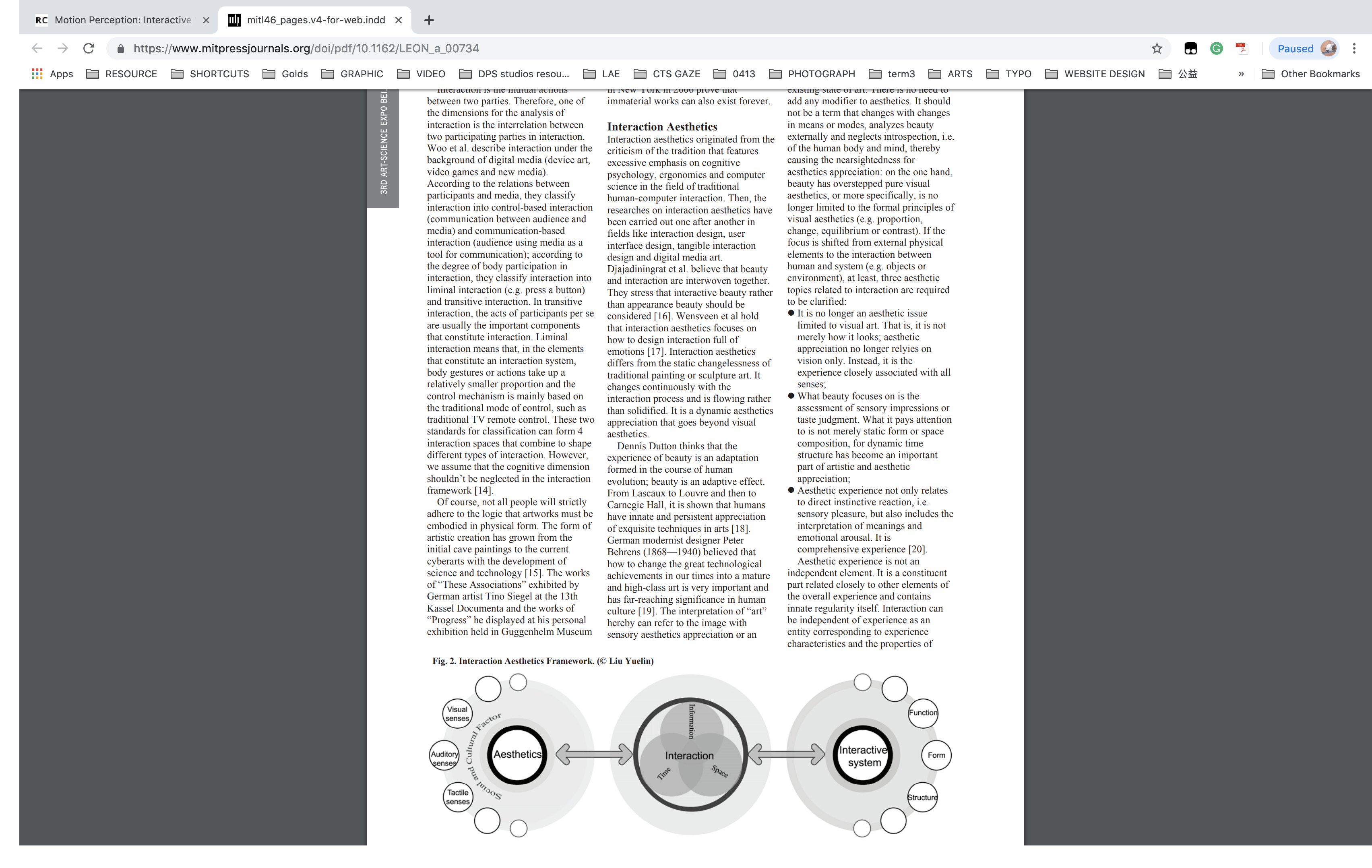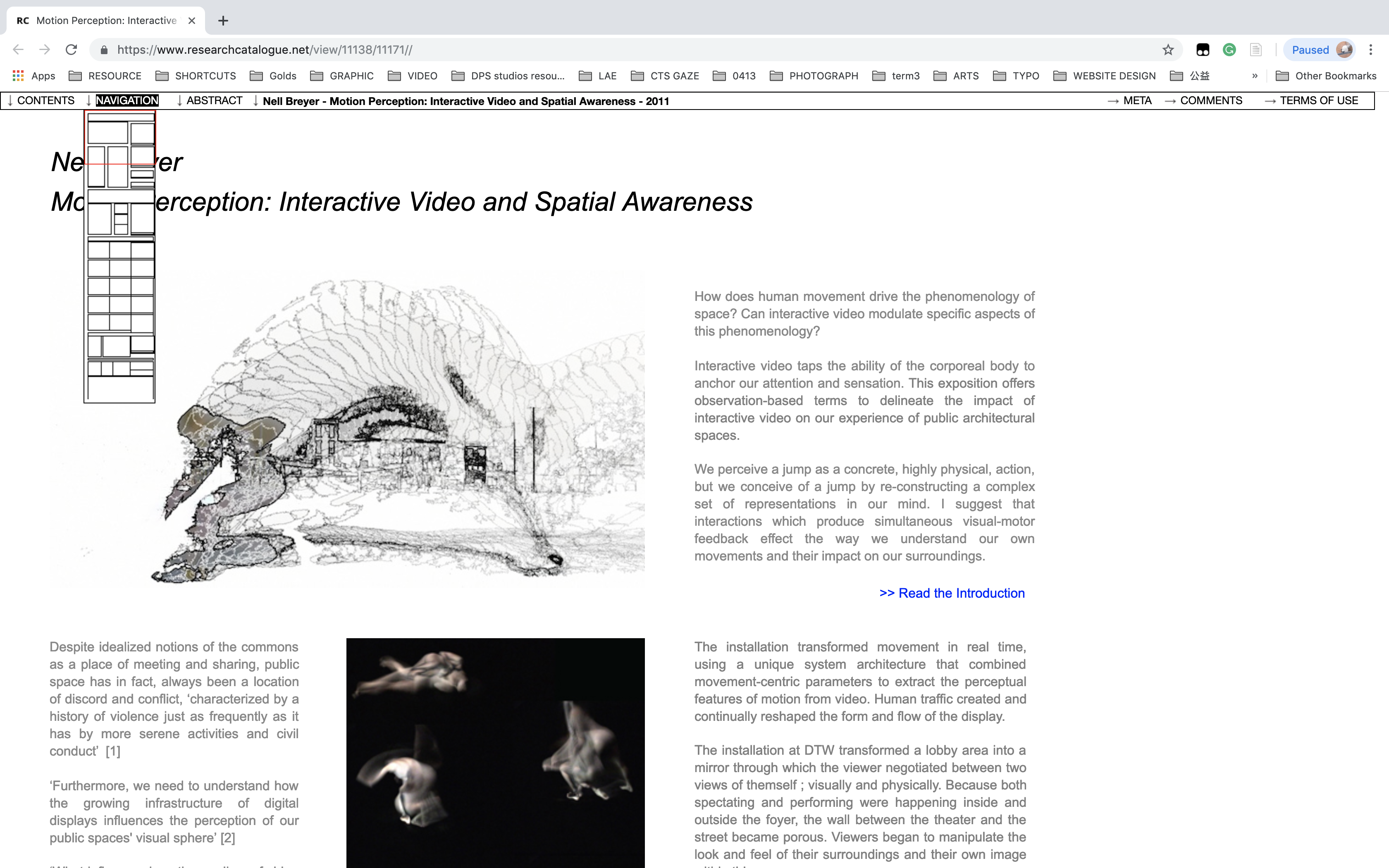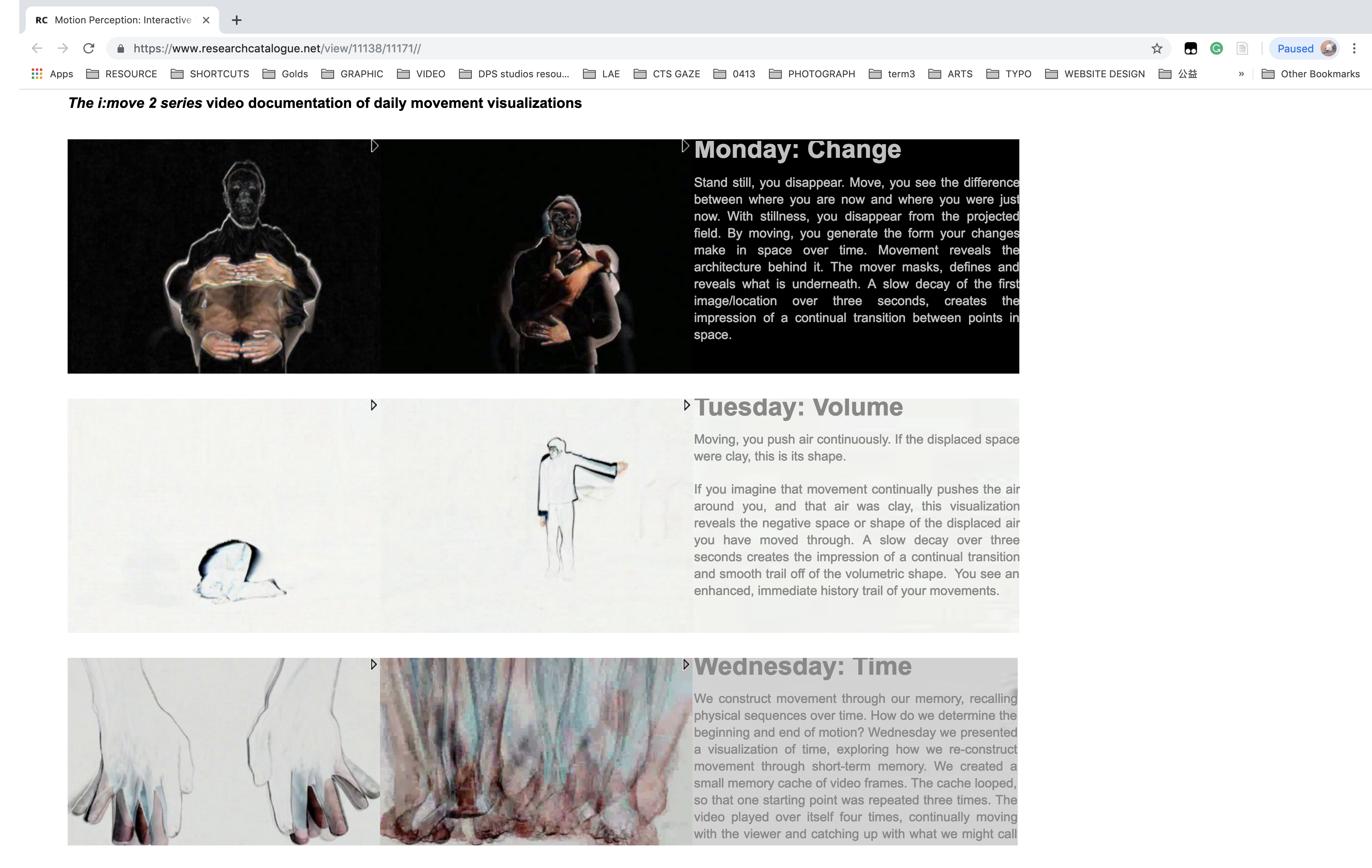JAR vs. Leonardo
# Term1_3
In week 3, Helen showed us two research recourse website for us to look into: JAR and Leonardo. We were supposed to choose some of the articles to read, and make a comparison of these two sites. And in this week’s lecture, Atau gave us an awesome introduction to the concepts related to embodiment, phenomenon, and perception.
In facts, I’ve been interested in the idea of embodiment and perception for a long time, but haven’t really properly learned them in theories. So the articles I chose from JAR and Leonardo are related to the embodiment theory: Motion Perception: Interactive Video and Spatial Awareness by Nell Breyer (JAR) and Embodiment, Interaction and Experience: Aesthetic Trends in Interactive Media Arts by Lu Xiabo (Leonardo)
Before we dive into the articles, let’s have a look at the general website About page.
Interactive Video and
Spatial Awareness by Nell Breyer
Embodiment, Interaction and Experience:
Aesthetic Trends in Interactive Media Arts by Lu Xiabo
First of all, JAR is a fully online, open access platform (journal), while Leonardo (from the MIT Press) is a published printed and digital book (journal). Secondly, they have different content orientation. Although they are both related to artist research, JAR spotlights on the general field of arts (both of practice and theoretical research), whereas Leonardo spotlights intensively on the intersection between science, technology and the arts. So the former would be good for the inspiration of the arts concepts, and the latter would be good for the specific research of computational arts.

Diving into the articles, we can see that the articles’ interface reveal the journal platforms’ attributes.
The article pages of Leonardo are in a traditional scanned PDF format. And most of the articles are academic papers - formal writing tone, formal layout with mainly text and little supporting images or charts.
The article pages of JAR are in an interactive interface format. Like a website, there’s a menu bar leading the way to different chapters of the article. And there’re many well-edited videos and images in between the paragraphs showing the working process and outcome details of the artist pieces. Comparing with Leonardo, the writings in JAR are in a less formal tone. Highlighting the essence of ‘artist research’, the writing style, the layout, the narrative tone are varied depends on the artist/ art work’s concepts and aesthetics.
Both of the contents from Leonardo and JAR are amazing. However I found the interface of JAR is absolutely inspiring. The difference between paper/book and computer is that a computational interface in interactive. Among all those clicks, slides, and embedded links, there’s a procedural action-experience. This fluid experience is corresponding to our flowing conscious and cognition. And the various medias (image, chart, video, audio) build more multiple-layered and concrete context for the text-based research documents.



© bingcomputing 2019
Xiaobo, L., Yuelin, L., 2014. Embodiment, Interaction and Experience: Aesthetic Trends in Interactive Media Arts. Leonardo 47, 166–169. https://doi.org/10.1162/LEON_a_00734
Breyer, N., 2011. Motion Perception: Interactive Video and Spatial Awareness. Journal for Artistic Research.
References